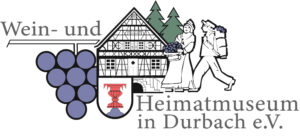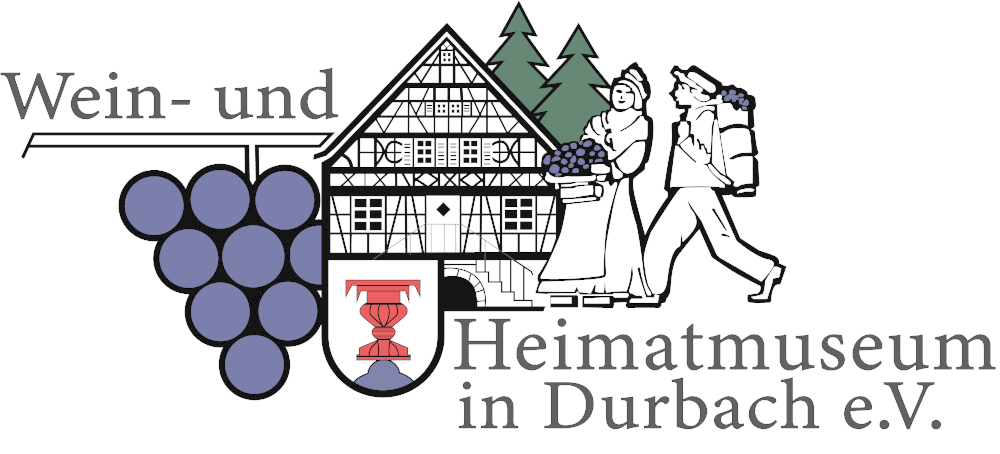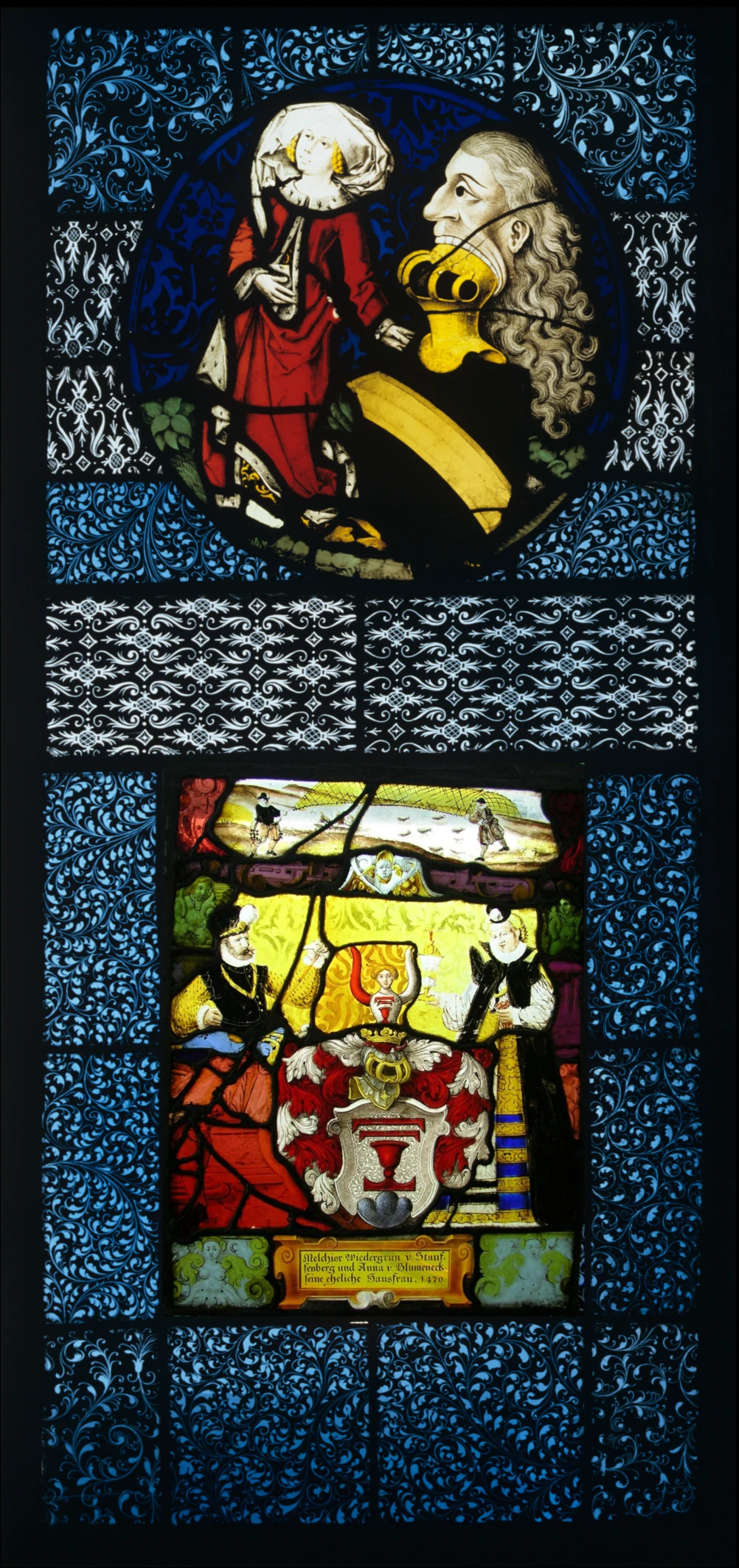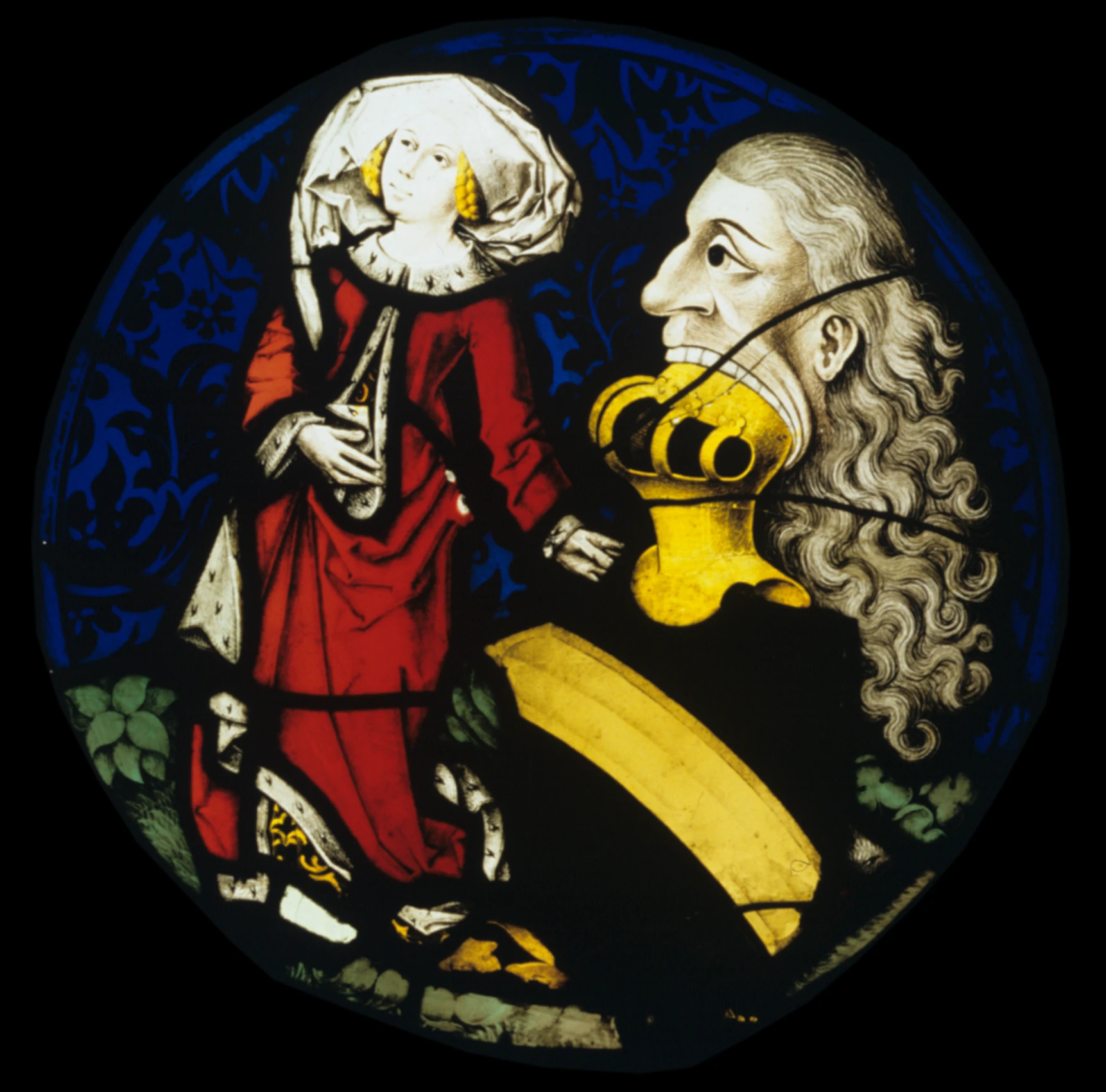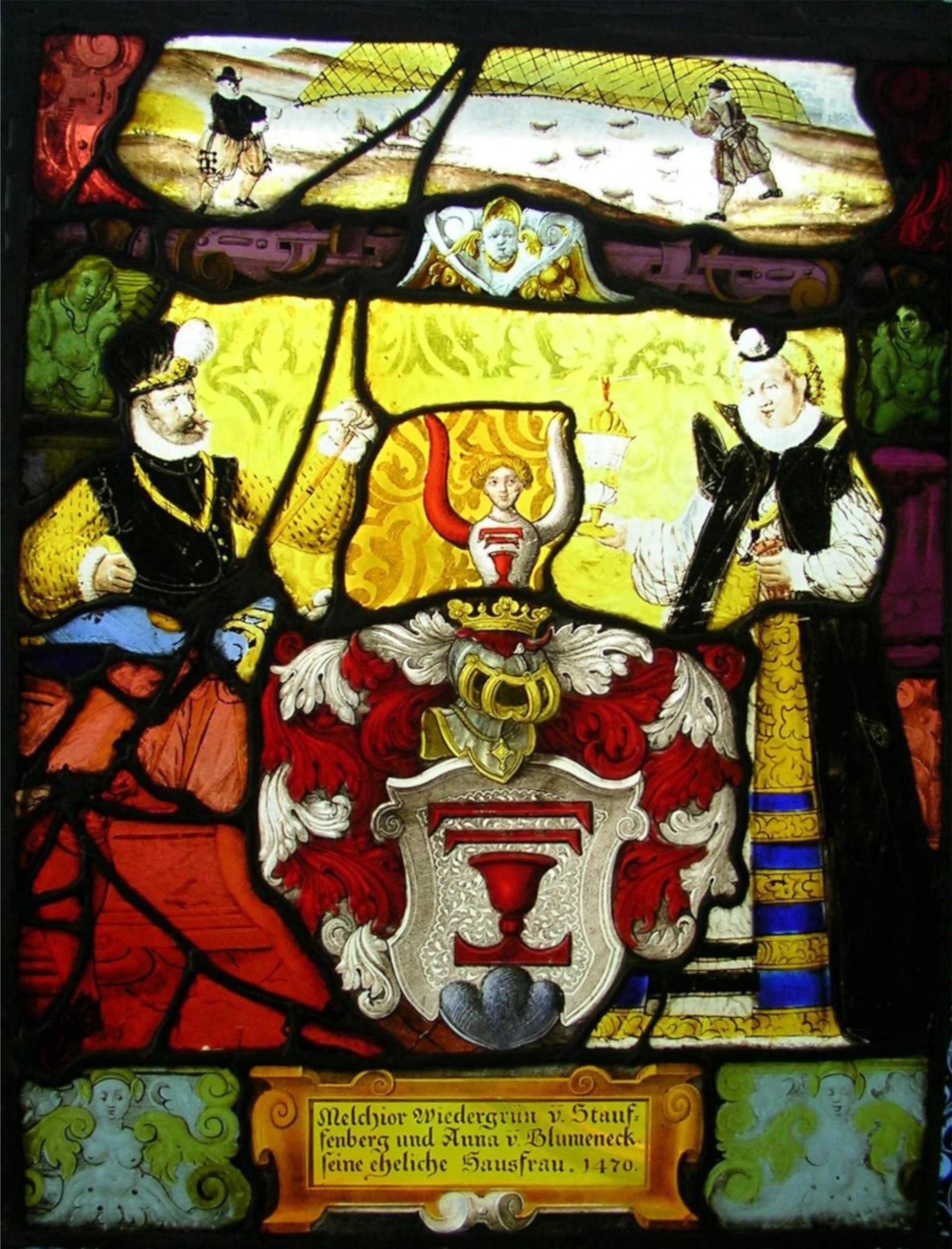261 Staufenberg Castle Window 1
Motif above: Coat of arms of Margarete von Uttenheim, married to Ulrich Kolb von Staufenberg, production: Strasbourg around 1475 – 1480
Motive below: Melchior von Wiedergrün with his wife Anna von Blumeneck around 1570. Staufenberg coat of arms with half-length female figure (Melusinenage) in the headpiece catching waterfowl; Inscription: “Melchior Wiedergrün v. Stauf-fenberg and Anna v. Blumeneck, his spouse. 1470″
Motif above: The round disc with the Uttenheim coat of arms is one of the first surviving examples of a coat of arms disc. In the 16th century, the monumental stained glass was completely replaced by heraldic discs. It is a top performance with the cabinet discs. The disc probably comes from the former “St George’s Chapel” at Staufenberg Castle.
Motive below: Melchior Wiedergrün von Staufenberg was probably one of the most important, but also one of the last Staufenberg feudatories. He is depicted on the disc as a man in traditional costume from the middle of the 16th century, together with his first wife Anna von Blumeneck. His second wife was born von Rathsamhausen. Under Melchior, the castle, in particular the former “Junkerhaus”, was considerably remodelled around 1560. The alliance coat of arms of Wiedergrün von Staufenberg and Blumeneck adorns both the sandstone wall at the entrance to the former Junkerhaus and the former “manorial mill” (Herrenmühle) in Durbach.
With the opening of various old ore mines around Staufenberg Castle, Melchior obtained a large amount of iron ore by the standards of the time. In an ironworks he ran, he was one of the first to produce the oven plates that were fashionable at the time. Two beautiful originals (motif: St George with the dragon, year 1579 and a large plate year 1560 with the motif Marcus Curtius as well as the motif of a portico and attacking knights) can be admired in the Wine and Local History Museum.
The extensive mining activities in particular brought the Staufenbergers relatively great wealth. In addition to various properties in Durbach and the surrounding area, he also owned the “Schlösschen Wiedergrün” (ancestral seat of the Wiedergrün von Staufenberg family) and the “Wiedergrüner Hof” in Offenburg. The old “legend of the noble knight of Staufenberg in the Ortenau” was also revived under Melchior. This Middle High German verse epic, written around 1310 by Egenolf von Staufenberg, was reworked in 1588 by the Strasbourg moralist and Reformation propagandist Johannes Fischart (1546/7-1589/90) on Wiedergrün’s commission. Images from this print by the Oberkirch artist Manuela Bijanfar can be seen in old stained glass technique on a new pane at the entrance to the special exhibition room.
